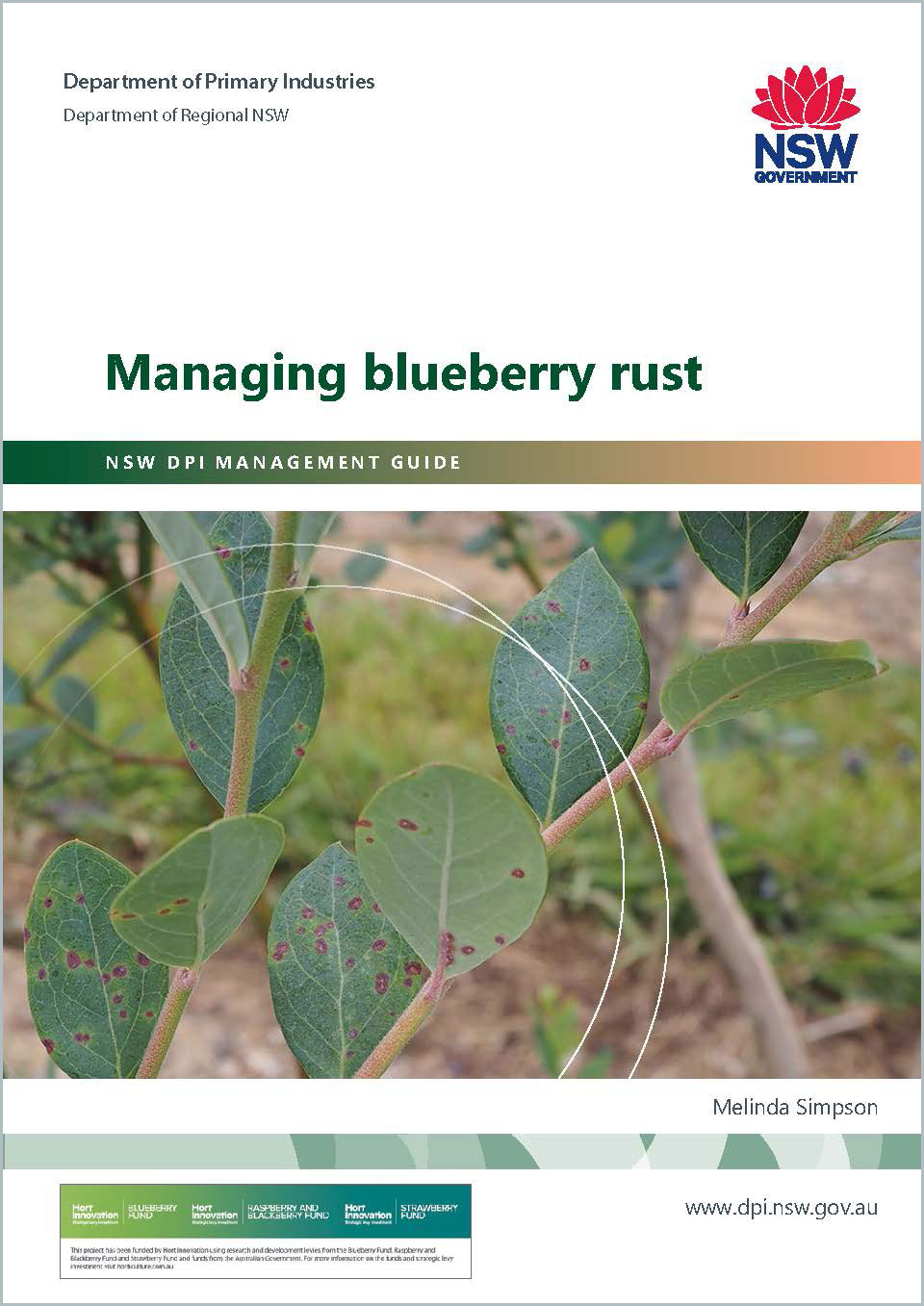
The NSW Department of Primary Industries (DPI) continues to support growers across the State with the release of the Managing blueberry rust publication.
Publications like this are regularly developed by NSW DPI experts to share up-to-date technical information on crop protection, updates on current research and industry information.
NSW DPI Development Officer - Horticulture, Melinda Simpson said that the publication was developed in response to the increased challenges faced by growers dealing with blueberry rust.
"We have experienced an increase in blueberry rust across all growing regions, due to ideal conditions for fungus growth, resulting in reduced plant vigour and reduction in production" said Ms Simpson.
"Blueberry rust thrives in warm, wet conditions, especially when there are extended periods of leaf wetness. The conditions we have experienced over summer and expected conditions into autumn are conducive to this."
This publication provides a comprehensive guide to growers to manage blueberry rust effectively and improve productivity and profitability through reduced infection and disease.
"Managing blueberry rust requires an integrated approach involving monitoring plants for early detection, monitoring weather conditions and knowing when they are conducive to the infection," Ms Simpson said.
"Integrated management also includes measures such as pruning, targeted application of fungicidal sprays and selecting plant varieties which are less susceptible through genetic resistance.
"The free guide covers all of these aspects to provide a comprehensive resource for growers when they need it."
Recent research on blueberry rust was undertaken by NSW DPI and Southern Cross University as part of a larger project led by the Tasmanian Institute of Agriculture evaluating a range of organic crop protectants to manage blueberry rust disease.
NSW DPI Horticulture Development Officer - Blueberries, Gaius Leong said that during the trials high disease levels occurred due to the high rainfall in the Northern Rivers, which was useful when measuring the impact of the eight products that were tested for blueberry rust control.
"The study found that some treatments had lower cumulative disease severity for the whole season compared with other treatments," Mr Leong said.
Data from these field trials contributed to this guide and will help inform future guides for growers and future research.
NSW DPI's latest Performance, Data and Insights publication shows that blueberries and rubus berries have a combined value of $395.2 million to the NSW economy, highlighting the importance of supporting growers by providing up-to-date research results and management guidance.
The Managing blueberry rust publication can be found on the DPI website at www.dpi.nsw.gov.au
This guide has been funded by Hort Innovation as part of the Facilitating the development of the Australian berry industries project, using the Blueberry, Strawberry and Raspberry & Blackberry research and development levies, contributions from the Australian Government and co-investment from NSW DPI.






